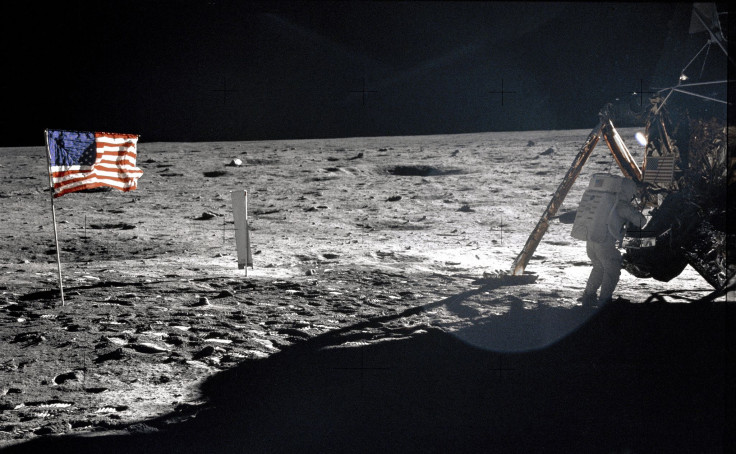Moon Landing Hoax? Russian Official Wants Apollo Mission Investigation In Wake Of US FIFA Corruption Arrests

NASA did not land on the moon, and the Apollo missions were an elaborate hoax that was shot on a soundstage. Some even say Stanley Kubrick directed the action. Moon-landing conspiracy theories are popular, but did a Russian official really say there should be an international investigation regarding the Apollo missions? Yes and no.
Vladimir Markin, the spokesman for Russia's Investigative Committee, penned a column for the Russian newspaper Izvestia focusing on the U.S. FIFA corruption investigation. Noting how it led to the arrest of several executives, he goes on to list several other incidents that should be the subjects of international investigations. The list would include the election of the U.S. to host the 1994 World Cup, the coup in Kiev and war crimes in Ukraine as events that should be looked into. More curiously, Markin said the Apollo mission also should be investigated.
Markin cites the loss of the original Apollo 11 moon landing video and the "disappearance" of 400 kilograms (about 882 pounds) of lunar rocks collected during Apollo missions as items worthy of a full-scale probe. "We are not contending that they did not fly [to the moon], and simply made a film about it. But all of these scientific -- or perhaps cultural -- artifacts are part of the legacy of humanity, and their disappearance without a trace is our common loss. An investigation will reveal what happened," Markin said in a translation from the Moscow Times.
Markin could have been making a statement about the absurdity of the U.S. launching its own international investigation into FIFA. Based on the roughly translated column, there should be some reciprocity when it comes to international investigations.
As for the items mentioned by Markin, some answers already exist. The original Apollo 11 footage is lost, and NASA conducted an extensive search for and investigation of the data tapes. The Slow-Scan TV transmission was beamed back to Earth and converted in real time to the standard NTSC television format. NASA erased and reused the original SSTV tapes. Much of the quality was lost in the conversion from SSTV to NTSC, but NASA worked to create a high-quality Apollo 11 landing video by restoring the best broadcast footage.
As for the lunar rocks, NASA has stored the vast majority at the Johnson Space Center in Houston, but samples are not released to institutions and governments around the world. There are hundreds of lunar rocks missing, but NASA has made it a priority to track them down.
© Copyright IBTimes 2025. All rights reserved.




















